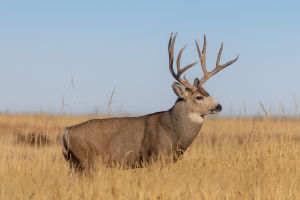When we think of camels, one image instantly pops up: the "ships of the desert," hauling through scorching landscapes with an apparent superpower - the ability to go without water for ages.
But just how much of this is true? Let’s dig into some myths, bust a few, and discover the fascinating adaptations that help camels thrive in extreme conditions.
1. The Camel Hump - Not a Water Tank!
Contrary to popular belief, camels don’t store water in their humps. Instead, their humps store fat, which serves as an energy reserve. When food is scarce, camels can metabolize this fat for energy, and in the process, they actually produce some water as a byproduct. However, the real benefit of the hump is that it helps camels regulate body temperature, sparing more water in the process. By concentrating body fat in their hump, camels avoid insulating their entire body, which helps them keep cool under the blazing sun
2. The Miracle of Camel Kidneys
Camels have extraordinarily efficient kidneys that produce highly concentrated urine, helping them conserve water. Studies have shown that camel kidneys reabsorb water and retain it remarkably well, producing a kind of “thickened” urine that wastes very little. This ability allows them to survive longer without water than most animals, especially in arid environments. The role of cholesterol levels in their kidneys is an intriguing factor; it helps in the water reabsorption process, making their kidney function both unique and crucial for survival.
3. Nasal Passages That Mean Business
Ever wonder how camels survive the dry desert air? Their unique nasal passages allow them to minimize water loss with each breath. The intricate structure of their noses actually helps reclaim moisture as they exhale, ensuring that precious water stays within their bodies. This is just one of the many evolutionary tricks that help camels survive in some of the driest places on Earth.
4. Not Forever Without a Drink
Although camels are famously able to survive long periods without water, they can’t go indefinitely without it. Typically, they can last up to one or two weeks in mild conditions. However, when they finally have access to water, camels can drink an impressive 30 gallons in one go! This rehydration ability is yet another key to their resilience in harsh environments.
5. Body Temperature Control
Camels can adjust their body temperature significantly - ranging from about 93°F at night to 105°F during the day. This fluctuation allows them to minimize sweating, which conserves more water. The higher daytime temperature reduces the need to sweat to stay cool, while the cooler night temperature enables them to recharge for the next day’s heat. This adaptability is why camels are desert survivors par excellence!
While camels can’t exactly go weeks without water, their incredible adaptations allow them to endure the desert's challenges better than almost any other creature. If you're ever lucky enough to encounter one, admire these resilient animals - and maybe give them some well-deserved water if you have any to spare! After all, these desert dwellers are more complex and fascinating than we often give them credit for.


